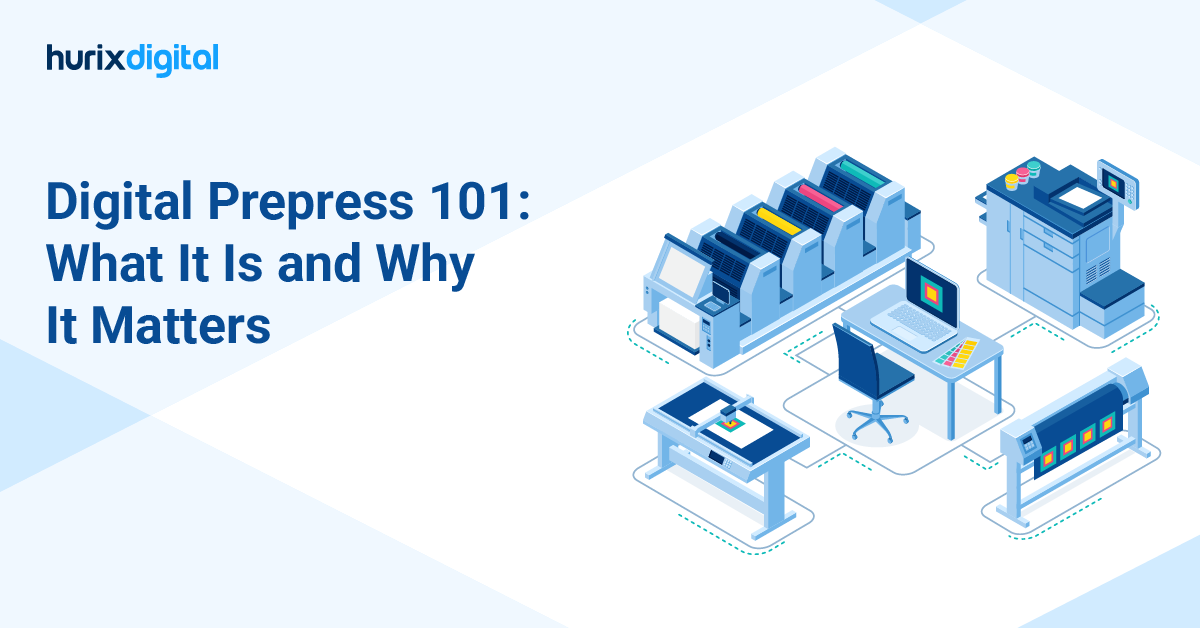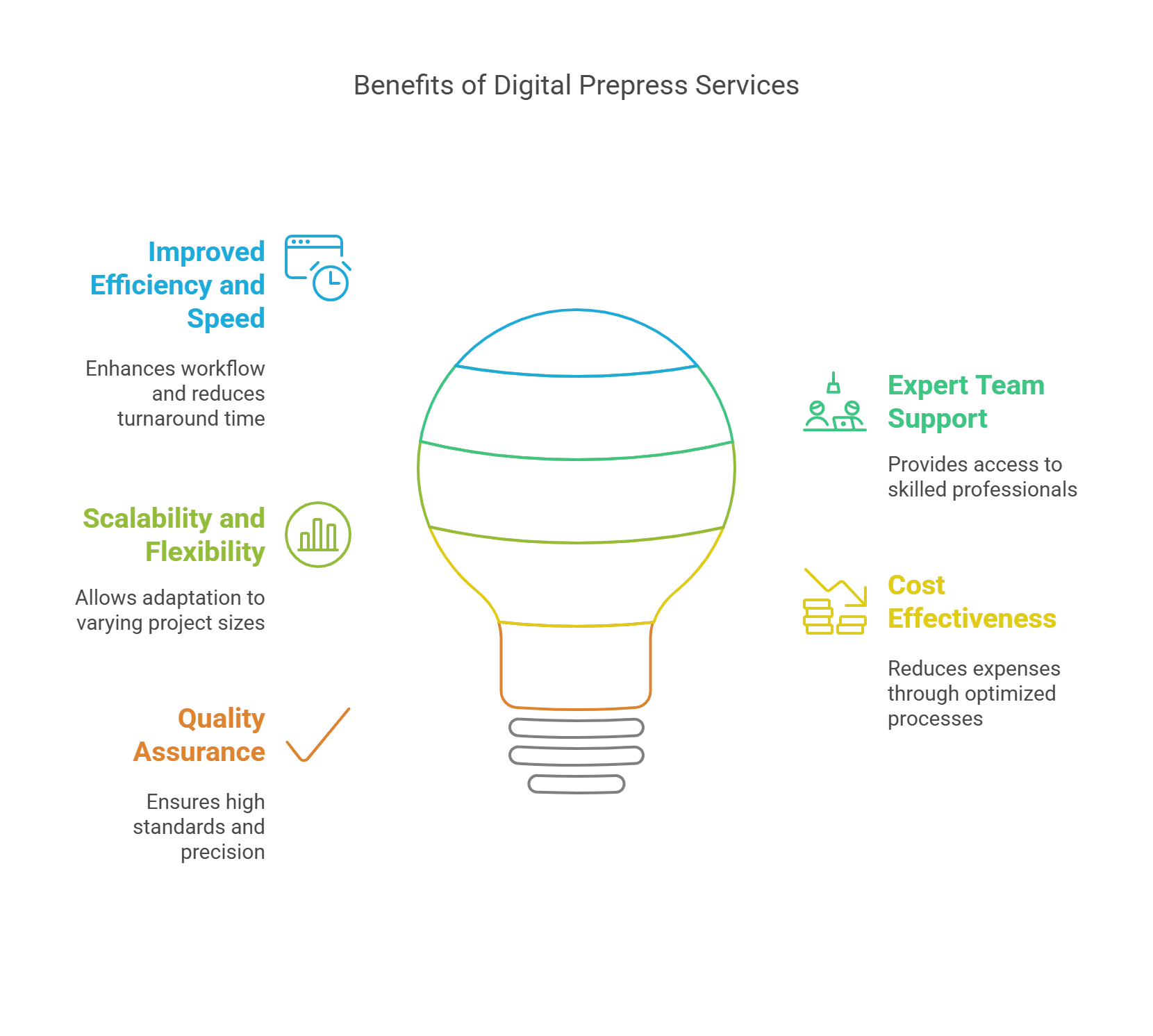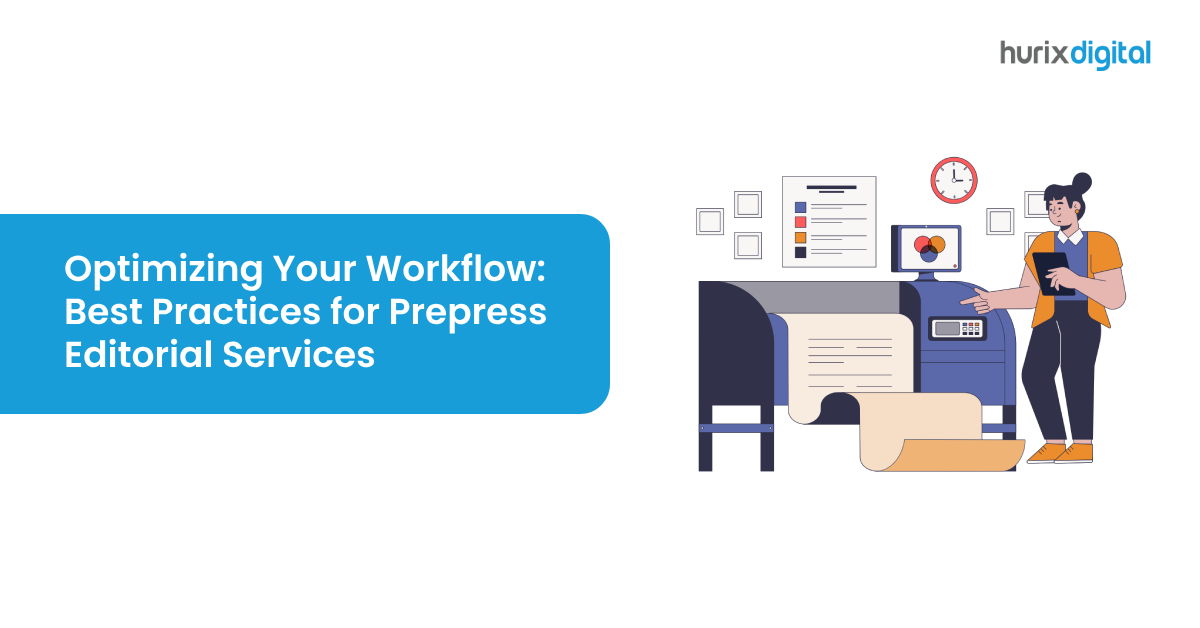
Digital Prepress 101: What it is and Why it Matters!
Summary
Prepress is evolving with digital advancements that improve efficiency and print quality. This guide explores the fundamentals of digital prepress, why it matters, and the latest trends reshaping the industry. Learn how emerging technologies are streamlining workflows, reducing costs, and revolutionizing the future of printing.
A large number of readers have started consuming content digitally, including eBooks, whitepapers, reports, and other formats. This increase in digital consumption has led to the emergence of the digital Prepress industry. This industry is growing at a compounding average rate(CAGR) of 11.3% and is expected to be valued at $79.6 billion by 2028.
While digital formats are preferred, print remains the most popular consumption format, with eBooks ranking second. Traditional Prepress methods must evolve to enable content creators to distribute content in both print and digital formats.
So, the ideal approach for a publisher is to embrace the best of both.
In this blog, we will explore digital Prepress, its entails, the steps involved, its myriad benefits, and why partnering with digital Prepress services can be a game-changer for businesses in the printing industry.
Table of Contents:
- What is Digital Prepress?
- What are Prepress Services in the Digital Print Industry?
- What are the Steps Involved in Digital Prepress?
- Why Should You Work with Digital Prepress Services?
- Latest Trends and Technologies That’re Reforming Prepress Services
- Conclusion
What is Digital Prepress?
Imagine you have written a report or a complete book on your desktop or laptop and want to print it out for distribution. Before you hit print, you will want to check the page layout, ensuring it looks just as perfect as it does on your screen. This is where digital Prepress services can help you out.
Digital Prepress involves various processes and technologies to prepare digital files for printing. It helps you create print-ready and digitally-enabled files, offering unparalleled speed, quality, and cost-effectiveness benefits. This is crucial because it helps you get a clear picture of your document’s appearance once it is printed.
Unlike traditional Prepress methods, which involve manual processes and physical materials such as typesetting and printing plates, digital Prepress leverages advanced technologies to streamline workflows and optimize print-ready files.
What are Prepress Services in the Digital Print Industry?
Unlike traditional methods like offset printing, we use modern technology to create printed materials in digital printing.
In offset printing, printing plates are created first; however, digital printing directly transfers digital files onto various substrates like paper, plastic, or fabric. Despite the differences, the one thing that is common between traditional and digital printing is prepress services.
The digital printing industry prepress services include all the steps before printing begins. These services ensure that the digital files are ready for printing and that the final output meets the desired quality standards.
Some common prepress services include:
- Getting the files in the right format
- Managing colors
- Making images look better
- Checking proofs
- Making sure everything meets quality standards
These services are crucial for ensuring the final printed materials’ accuracy, consistency, and quality. They also play a vital role in streamlining the printing process and optimizing efficiency.
What are the Steps Involved in Digital Prepress?
Digital Prepress services involve several key steps, which can include:
- File Preparation: The process begins when you receive a file for printing. These files can include text, images, graphics, and other elements that need to be optimized for printing.
- Image processing: These digital files are converted into a print-ready format using image processors like Adobe InDesign, Illustrator, Photoshop, or other editors. Image processing ensures that the result looks good on paper and correctly captures the graphic elements and images that may be part of the digital file.
- Color Management: The next stage is optimizing the file for reproduction in print. This involves color management techniques to calibrate the file for printing devices, ensuring consistent color reproduction across different media and platforms.
- Font Management: Using optimized fonts that are ideal for printing and consistent with the document’s typography.
- Proofreading: Although not a prerequisite for printing, most Prepress services also involve proofreading the draft one final time to ensure that no errors or typos are included in the final print.
- File Optimization: Once any issues are identified and corrected, the files are optimized for printing. This may involve converting colors to the appropriate color space, adjusting image resolution, and embedding fonts to ensure compatibility with the printing device.
- Final Approval: The files are deemed ready for production once the client approves the digital proofs. At this stage, the Prepress team prepares the files for output, including imposition for printing multiple pages per sheet and adding necessary trim and bleed marks.

Why Should You Work with Digital Prepress Services?
Digital Prepress services offer a wide array of design and content-focused services, including color management, proofing, advanced printing, and preparation to help make your files print-ready.
Thus, by embracing a Prepress service, businesses can gain a wide variety of benefits, including:
1. Improved Efficiency and Speed
Digital Prepress streamlines workflows, reducing manual intervention and processing time. This helps you get a faster turnaround for tasks like image processing and file optimization, enabling you to meet tight deadlines and gain exceptional results with limited resources.
2. Gain a Team of Experts by Your Side
Digital Prepress service providers bring specialized expertise and years of experience in handling diverse printing projects. Their knowledge of industry best practices, advanced technologies, and evolving trends ensures optimal results and superior quality outputs.
3. Scalability and Flexibility
Digital Prepress services offer scalability and flexibility to accommodate varying project requirements and workloads. Whether you have a small-scale printing project or a large-scale production run, digital prepress services can scale their resources and capabilities accordingly to meet your needs.
4. Cost Effectiveness
Digital Prepress helps businesses save on material costs and labor expenses by minimizing errors and reprints. This helps businesses optimize their printing projects and increases productivity and profitability.
5. Quality Assurance
Using digital Prepress providers ensures the best quality output. These providers adhere to stringent quality control measures to ensure that every print job meets the highest standards of quality and accuracy.
Through comprehensive proofing and validation processes, they minimize the risk of errors and ensure consistent quality across all printed materials.
Check out EXCLUSIVE: Hurix Mini-Book: PrePress Tips You Won’t Find Anywhere Else

Latest Trends and Technologies That’re Reforming Prepress Services
As the market expands, new trends and technologies are emerging to enhance digital print and prepress services further.
Here is a snapshot of some of these major trends and technologies that are reshaping the prepress services industry:
1. Automation and AI
Artificial Intelligence (AI) ‘s transformative power spans diverse sectors, and the prepress services industry is no exception.
In recent times, there has been a surge of excitement surrounding the integration of automation and AI, reshaping the landscape of prepress operations. Essentially, this technological advancement aims to simplify and expedite processes.
Automation and AI technologies handle prepress tasks by streamlining the labor-intensive processes in the prepress industry. For example, tasks like checking files, maintaining print consistency, text and image recognition, and color management can be done in a fraction of the time by utilizing AI-powered software.
As a result, professionals now have more time for creativity and innovation. It also saves money and time while delivering the best results to the clients.
2. AR and VR Technologies
The prepress industry has been exploring exciting new frontiers with Augmented Reality and Virtual Reality technologies. These recent advancements are changing the way we interact with printed materials today.
For example, with AR, printed materials can come to life through smartphone apps by adding interactive content layers like videos and animations. On the other hand, VR offers immersive experiences where users can step into virtual environments. This results in more engaging presentations and simulations.
In short, with VR, designers could virtually walk clients through the designs to get a better sense of how they’ll look in real life. Lastly, AR and VR technology also opens up new possibilities for marketing, training, and education in the prepress and digital print industries.
3. Cloud-Based Collaboration
Cloud-based collaboration is another emerging trend in the prepress services industry. The primary motive of cloud-based collaboration within the prepress industry is to enable the teams to work together on projects in real-time.
Cloud-based tools allow designers, editors, and clients to access and work on the same files simultaneously from anywhere with an internet connection. This results in smoother workflows, better communication, and faster project completion.
Another perk of this technology is that it often comes with version control features. Hence, you never have to worry about losing track of the latest changes or accidentally overwriting someone else’s work.
4. 3D Printing
3D printing or additive manufacturing, is a process in which physical objects are constructed layer by layer from digital designs. These designs are created using computer-aided design (CAD) software. Traditionally, 3D printing is not a direct part of prepress services, but it’s definitely opening up a new revenue stream in this industry.
Within the prepress industry, 3D printing is becoming a valuable tool for prototyping and manufacturing. It rapidly produces three-dimensional models and lets designers visualize and assess designs and product prototypes before mass production.
5. Short-Run Printing and Sustainability
Another trend that is gaining popularity in the prepress industry in 2024 is short-run printing. Short-run printing is like printing on-demand but for smaller quantities. It lets you print just the right amount you need instead of thousands of copies of something.
This trend is especially transforming small businesses that cannot afford to order large quantities they might not sell. It is cost-effective, saves resources, and has a higher turnaround time.
Furthermore, sustainability is becoming a key focus in the industry. Manufacturers increasingly adopt environmentally friendly materials and processes to minimize waste and reduce their carbon footprint.
Conclusion
Digital Prepress processes can help you perfect your print materials, making them stand out and look professional. Moreover, the decision to work with digital Prepress services opens up a world of possibilities for your business. It enables you to leverage expertise, access cutting-edge technologies, and focus on your core competencies.
Whether optimizing workflows, reducing costs, or delivering exceptional print outputs, partnering with digital Prepress services empowers businesses to achieve their goals confidently. As the printing industry continues to evolve and embrace digital transformation, digital Prepress will remain at the forefront, driving innovation and efficiency every step of the way.
Are you looking to enhance your Prepress workflows and boost your business efficiency? Hurix Digital is the perfect partner!
Hurix Digital is a leading Prepress agency that offers a seamless blend of innovation and precision. It helps you elevate your print outcomes and marketing game.
Want to know more? Contact us to speak with our experts and learn more about our Prepress and editorial services.

Vice President – Digital Content Transformation. He is PMP, CSM, and CPACC certified and has 20+ years of experience in Project Management, Delivery Management, and managing the Offshore Development Centre (ODC).







